What are the tax and investment considerations for a Granny Flat above versus a Tiny Home below? Income Tax Return Reporting - Income Streaming Tiny Homes Tiny home ownership does not have to follow the ownership interest of the underlying property ownership. For...
3rd Wave COVID-19 Stimulus – Job Keeper Payment – Hibernation

Job Keeper Payment Overview
Support for Employers to keep employees on the books!
Employer Register Now for Jobkeeper
The Job Keeper Payment will provide a flat $1,500 a fortnight per employee for businesses to retain or rehire nearly six million workers.
Businesses that experience a 30% drop in turnover since the 1st March 2020 will be eligible.
Employers that have already lost their job will be eligible if the business had them on the books on the 1st March 2020.
The first payment will be received by employers from the ATO in the first week of May.
Eligible employers will need to identify eligible employees for Job Keeper Payments and must provide monthly updates to the ATO.
Participating employers will be required to ensure eligible employees will receive, at a minimum, $1,500 per fortnight, before tax.
It will be up to the employer if they want to pay superannuation on any additional wage paid because of the Job Keeper Payment
Sole Traders, Self-Employed, Partnerships & Trust, that may have missed out on previous Stimulus Packages will also benefit.
Parliament will now be recalled passing legislation on the Job Keeper Payment Scheme.
ELIGIBLE employers
Employers will be eligible for the subsidy if:
• their business has a turnover of less than $1 billion and their turnover will be reduced by more than 30 per cent relative to a comparable period a year ago (of at least a month); or, need to provide comparative YTD Profit & Losses compared last year on a monthly basis to substantiate.
The employer must have been in an employment relationship with eligible employees as at 1 March 2020 and confirm that each eligible employee is currently engaged in order to receive Job Keeper Payments
.
Self-employed individuals (businesses without employees) that meet the turnover tests that apply for businesses are eligible to apply for Job Keeper Payments, a business that previously wasn’t eligible as only the owners of the business were engaged in the business can apply.
Eligible employees
Eligible employees are employees who:
• are currently employed by the eligible employer (including those stood down or re-hired).
• were employed by the employer at 1 March 2020.
• are full-time, part-time, or long-term casuals (a casual employed on a regular basis for longer than 12 months as at 1 March 2020).
• are at least 16 years of age.
• are an Australian citizen, the holder of a permanent visa,
• are not in receipt of a Jobseeker Payment from another employer.
If your employees receive the Jobseeker Payment, this may affect their eligibility for payments from Services Australia as they must report their Jobseeker Payment as income.
Businesses without employees (Sole Traders, Partnerships & Trust)
Businesses without employees, such as the self-employed, can register their interest in applying for job Keeper Payment via ato.gov.au from 30 March 2020.
Businesses without employees will need to provide an ABN for their business, nominate an individual to receive the payment and provide that individual’s Tax File Number and provide a declaration as to recent business activity.
People who are self-employed will need to provide a monthly update to the ATO to declare their continued eligibility for the payments. Payment will be made monthly to the individual’s bank account.
Employers Required to: –
• Register an intention to apply on the ATO website and assess that they have or will experience the required turnover decline.
Employer Register Now for Jobkeeper
• Provide information to the ATO on eligible employees. This includes information on the number of eligible employees engaged as at 1 March 2020 and those currently employed by the business (including those stood down or rehired). For most businesses, the ATO will use Single Touch Payroll data to pre-populate the employee details for the business.
• Ensure that each eligible employee receives at least $1,500 per fortnight (before tax). For employees that were already receiving this amount from the employer then their income will not change. For employees that have been receiving less than this amount, the employer will need to top up the payment to the employee up to $1,500, before tax. And for those employees earning more than this amount, the employer is able to provide them with a top-up.
• Notify all eligible employees that they are receiving the job Keeper Payment.
Examples
An employer with employees on different wages
Adam owns a real estate business with two employees. The business is still operating at this stage, but Adam expects that turnover will decline by more than 30 per cent in the coming months. The employees are:
• Anne, who is a permanent full-time employee on a salary of $3,000 per fortnight before tax and who continues working for the business; and
• Nick, who is a permanent part-time employee on a salary of $1,000 per fortnight before tax and who continues working for the business.
Adam is eligible to receive the job Keeper Payment for each employee, which would have the following benefits for the business and its employees:
• The business continues to pay Anne her full-time salary of $3,000 per fortnight before tax, and the business will receive $1,500 per fortnight from the job Keeper Payment to subsidise the cost of Anne’s salary and will continue paying the superannuation guarantee on Anne’s income.
• The business continues to pay Nick his $1,000 per fortnight before tax salary and an additional $500 per fortnight before tax, totalling $1,500 per fortnight before tax. The business receives $1,500 per fortnight before tax from the job Keeper Payment which will subsidise the cost of Nick’s salary.
The business must continue to pay the superannuation guarantee on the $1,000 per fortnight of wages that Nick is earning. The business has the option of choosing to pay superannuation on the additional $500 (before tax) paid to Nick under the job Keeper Payment.
Adam can register his initial interest in the scheme from 30 March 2020, followed subsequently by an application to ATO with details about his eligible employees. In addition, Adam is required to advise his employees that he has nominated them as eligible employees to receive the payment. Adam will provide information to the ATO on a monthly basis and receive the payment monthly in arrears.
The employer with employees who have been stood down without pay
Zahrah runs a beauty salon in Melbourne. Ordinarily, she employs three permanent part-time beauticians, but the government directive that beauty salons can no longer operate has required her to shut the business.
As such she has been forced to stand down her three beauticians without pay.
Zahrah’s turnover will decline by more than 30 per cent, so she is eligible to apply for the job Keeper Payment for each employee, and pass on $1,500 per fortnight before tax to each of her three beauticians for up to six months. Zahrah will maintain the connection to her employees and be in a position to quickly resume her operations.
Zahrah is required to advise her employees that she has nominated them as eligible employees to receive the payment. It is up to Zahrah whether she wants to pay superannuation on the additional income paid because of the job Keeper Payment.
If Zahrah’s employees have already started receiving income support payments like the Jobseekers Payment when they receive the job Keeper Payment, they should advise Services Australia of their change in circumstances online at my.gov.au or by telephone.

Need advice as an employer or self-employed business, please contact our office online.
Download
https://treasury.gov.au/sites/default/files/2020-03/Fact_sheet_Info_for_Employers_1.pdf
Employer Register Now for Jobkeeper
ATO Registration Required
Online Support – for all appointments now!
All appointments are now able to be conducted online via Skype or Zoom. When you call or book online, you can now nominate to have your meeting via Skype or Zoom.
Also, we are offering after-hours and Saturday Morning Appointments.

Online appointments will allow a number of individuals in different locations to join the meeting, without the need to travel or be concerned about social distancing or isolation measures in place.




